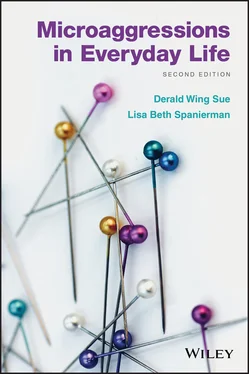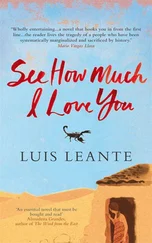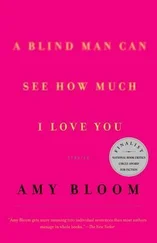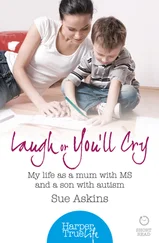Environmental macroaggressions often are packaged in symbols. From 1926 to 2007, Chief Illiniwek was the official symbol of the University of Illinois at Urbana‐Champaign sports teams. During university sporting events, Chief Illiniwek would perform a dance routine before fans during games, at halftimes, and after victories. For two decades, Native American students, staff, and faculty and their allies deplored the choice of mascot as being demeaning, hostile, and abusive toward them, their cultures, and their lifestyles. They claimed that the symbol/mascot of Chief Illiniwek misappropriated, disrespected, and dehumanized Native Americans and perpetuated harmful racial and ethnic stereotypes (Garippo, 2000).
In general, Chief Illiniwek, portrayed by a White student in Sioux regalia, was said to create a hostile environment toward diversity, hinder development of a positive learning community, promote an inaccurate image of Native Americans, and assail the integrity of indigenous peoples. Numerous organizations, such as the National Association for the Advancement of Colored People, the National Education Association, Amnesty International, and the National Congress of American Indians, supported the retirement of Chief Illiniwek (Guiliano, 2015; Spindel, 2000).
For years the university, the majority of the student body, and even the Illinois state legislature supported the mascot because it was meant to honor Native Americans and was a beloved symbol of the spirit of a great university. Native Americans, however, often asked, “Why don't we feel honored?” In February 2007, after decades of controversy, Chief Illiniwek was retired. In their research study of weblog comments offered in response to the chief’s discontinuation, Clark, Spanierman, Reed, Soble, and Cabana (2011) found seven microaggressive themes that target Native Americans. For example, online contributors expressed “adoration” and “honor” for Native Americans via a caricature. Notably, related posts also referred to Native Americans as “extinct” or “vanishing” and claimed that without Chief Illiniwek, non‐Native Americans would soon forget about actual Native American peoples. These sentiments create an unwelcoming and even hostile environment for actual Native American students, faculty, and staff on campus. This example demonstrates how macroaggressions may be delivered environmentally and shows the interplay bewteen microaggressions (when an individual wears a “Chief” t‐shirt) and macroaggressions (a racist mascot represents to represent an institution). As an epilogue, it is sad to note that, although not in the role of an official mascot, Chief Illiniwek reappeared on the University of Illinois campus in 2008 under the banner of “free speech” and continues unofficially in 2019.
Environmental macroaggressions are powerful and can be transmitted through numerical imbalance of one's own group (Purdie‐Vaughns et al., 2008), mascots or symbols, and inaccurate media portrayals of marginalized groups in films, television, radio, print media, and educational curriculum (books, course content, films, etc.). The sheer exclusion of decorations, literature, and ethnic aesthetic‐cultural forms like music, art, language, and food can also assail the racial, gender, or sexual identity of various groups.
Empirical research has begun to document environmental macroaggressions. In a revealing study, for instance, researchers found that “diversity cues” (number of minority members at a worksite, diversity philosophy communicated through company brochures, etc.) in corporate America directly affected the perception of threat or safety experienced by Black American job applicants (Purdie‐Vaughns et al., 2008). The researchers explored institutional cues rather than interpersonal ones that signaled either safety or threat to African Americans. Environmental conditions directly influenced how marginalized groups perceive whether they will be valued or demeaned in mainstream settings. The term “social identity contingencies” refers to how individuals from stigmatized groups anticipate whether their group membership will be threatened (devalued or perceived negatively) or valued in corporate America. When the cues signal threat, lack of trust ensues, feelings of safety diminish, and vulnerability increases. This in turn has a major detrimental impact on the group identity of the employee and potentially lowered productivity.
Studies focused on university students also provide evidence for environmental macroaggressions. Among Aboriginal university students in Quebec (e.g., Mohawk and Cree), for example, findings indicate that participants lived with daily cultural and social isolation on a campus with few Aboriginal students and pressure to fit into White, Canadian European norms and practices (Clark, Kleiman, Spanierman, Isaac, & Poolokasingham, 2014). In a related study at the same university, Muslim and Arab students reported being exposed to cultural insensitivity in the campus milieu (prayer space was situated adjacent to a rowdy campus pub that serves alcohol; Najih, Spanierman, & Clark, 2019). At another Canadian university, research findings suggest that Asian international students faced structural barriers and other environmental stressors on campus. Support for these students, and those in other studies, came from participants' communities outside of the university (Houshmand et al., 2014). Among U.S. undergraduate students, Yosso, Smith, Ceja, and Solórzano (2009) found support for experiences with institutional microaggressions (or what we now refer to as macroaggressions) reflecting negative campus racial climates.
Recent research on queer and trans students also documents environmental macroaggressions. For example, one study found that queer women generally felt unsafe and vulnerable as they encountered a campus environment with pervasive heteronormative assumptions that placed them under surveillance during everyday activities (Dimberg, Clark, Spanierman, & VanDaalan, 2019). In another study, trans participants reported being subjected to ciscentric, segregated, binary systems and structures across the university (Moody, Spanierman, Houshmand, Smith, & Jarrett, 2019). In summary, environmental macroaggressions permeate the norms, policies, and practices of various institutions. Consequently, these institutions may feel unwelcoming, alienating, hostile, and unsafe to targets from marginalized groups, thus creating the conditions for microaggressions to thrive.
Forms of Microaggressions
D. W. Sue and colleagues (D. W. Sue, Capodilupo, et al., 2007; D. W. Sue & Capodilupo, 2008) have proposed a taxonomy of racial, gender, and sexual‐orientation microaggressions that fall into three major categories: microassaults, microinsults, and microinvalidations. All three forms may vary on the dimension of awareness and intentionality by the perpetrator, but they all communicate an overt, a covert, or a hidden offensive message or meaning to recipients. Because of the insidiousness of subtle forms of discrimination, microaggressive themes and much of the empirical research focus on microinsults and microinvalidations (Wong, Derthick, David, Saw, & Okazaki, 2014). Figure 2.1presents the categorization and relationship of racial microaggressions to one another. Although we focus here on racial microaggressions, the taxonomy applies generally to other microaggressions (e.g., gender and sexual‐orientation).
Microassaults are conscious, deliberate, and either subtle or explicit racial, gender, or sexual‐orientation biased attitudes, beliefs, or behaviors that are communicated to marginalized groups through environmental cues, verbalizations, or behaviors. They are meant to attack the group identity of the person or to hurt/harm the intended victim through name‐calling, avoidant behavior, or purposeful discriminatory actions (Miller & Garran, 2008; Nelson, 2006). Displaying a Klan hood, Nazi swastika, noose, or Confederate flag; burning a cross; and hanging Playboy bunny pictures in a male manager's office may all constitute microassaults that reflect individual expressions of environmental macroaggressions. The intent of these messages oftentimes is to threaten and intimidate. These messages make people feel unwanted and unsafe because they are deemed inferior, subhuman, and lesser beings who do not belong on the same levels as others in this society.
Читать дальше












